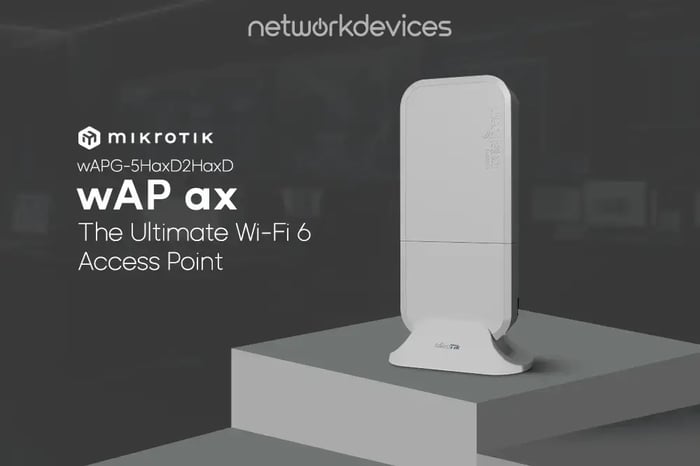You have no items in your shopping cart.

Cisco Access Points 2800 vs. 3800: A Comparison
This article compares the Cisco Access Points 2800 vs. 3800 Series.
The Cisco 2800 series generally has a lower price point than the 3800 series and offers a lower port density. The Cisco 3800 series switches are more expensive but provide more throughput.
With each advance in wireless technology, access points are increasing in their number of radios and power processing options. Take, for example, the multiGigabit port and XOR radio features. The Cisco AP 2800 lacks them, while the Cisco 3800 Series AP embodies both.
Cisco Access Points 2800 vs. 3800 Series APs
Cisco Access Points 2800 and 3800 Series are designed and architected to meet their users' needs for mission-critical and best-in-class applications. Both access points can efficiently function with 802.11ac Wave 2 powering systems. You can use Cisco 3800 Series Access Points for advanced features such as module support.

Product Specifications:
Cisco Access Points 2800 and 3800 Series exhibit cutting-edge antenna technology in them. ClientLink 4.0 has four transmit radios and four receive radios, known as 4x4 in a Multiple Input Multiple Output (MIMO) configuration, and supports three spatial streams (3SSS). These are referenced together as 4x4:3.
ClientLink 4.0 uses these features along with an additional antenna (N+1) to allow for beamforming for all 802.11a/g/n/ac and now ac Wave-2 clients, including those supporting 3 spatial streams.
This smart antenna system and an additional Modulation Coding Scheme (MCS) can increase the support rate to 256 QAM and 160 MHz channel bonding. It can also increase support rates up to 5 Gbps. It is an excellent option for extensive campus networking to save costs. Customers now need not worry about running new cabling to support the new speeds.
Cisco Access Points 2800 vs. 3800 Series
Cisco Access Points 2800 vs. 3800 series have almost similar physical dimensions. However, they differ marginally in their physical appearance to accommodate modularity and mGig support, which results in a slight difference in width and height. See them below.
|
Product |
Length |
Width |
Height |
|
AP28021 x K9 |
8.66" - 22cm |
8.68" - 22cm |
2.17" - 5.5cm |
|
AP2802E x K9 |
8.66" - 22cm |
8.77" - 22cm |
2.50" - 6.4cm |
|
AP3802E x K9 |
8.66" - 22cm |
8.68" - 22cm |
2.46" - 6.25cm |
|
AP38021 x K9 |
8.67" - 22cm |
8.68" - 22cm |
2.62" - 6.7cm |
Hardware & Mounting Options
For mounting, Cisco 2800 & 3800 Series Access Points use the same brackets, such as 2700/3700 2700/3700 Series Access Points – AIR-AP-BRACKET1 and AIR-AP-BRACKET-2.
Regarding their physical appearance, AP 3800 is more robust to support mGig (NBASE-T) and optional modules. AP 2800 has a smooth-run body and doesn't have heat fins on it.
Cisco 2800 and 3800 Series Access Points are noticeably heavier than the AP2700 and AP3700. This difference is due to the robust design of the components used, including a dual-core processor, 12 radio transceivers, additional memory, processor power, and additional Ethernet capability, including mGig on the AP 3800 and optional module support.
See the Comparison Between 2800 & 3800 Series Access Points
|
Cisco Aironet 2800 Series |
Cisco Aironet 3800 Series |
|
Designed for medium-sized to large enterprises |
Designed for high-density environments |
|
Supports 802.11ac Wave 2 |
Supports 802.11ac Wave 2 & multiGigabit Ethernet |
|
Offers innovations for high-density environments |
Modularity for wireless security and advanced features |
|
Cisco Mobility Express and controller based |
Cisco Mobility Express and controller based |
Cisco 2800 vs. 3800: The Wrap-Up
Cisco Catalyst mGig technology addresses several issues related to Catalyst 3850, 4500E, and 3560-CX switches, with the 3800 series access point leveraging the single-wire mGig connection. Admittedly, this is a massive advancement for 802.11ac Wave 2 implementation. Any attempt to deploy new features in them in the future should be thought twice for the available expandability option of module ports in AP 3800, such as an option to integrate physical modules for advanced security or hyper location technologies.
Cisco Access Points 2800 and 3800 Series are now only available as pre-orders. You can get in touch with our sales team by CLICKING HERE.












